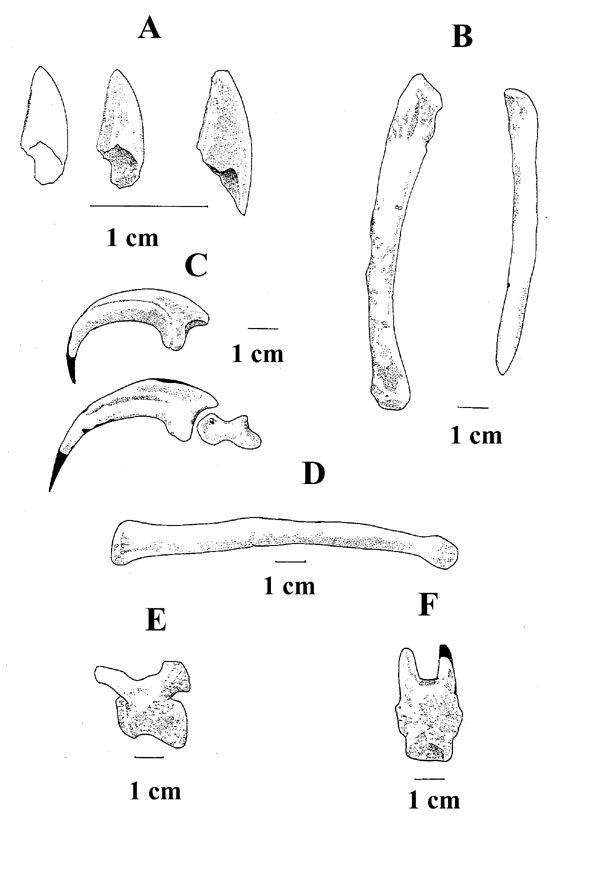MNHN BO006, BO007, BO008, BO0009, BO010: Pedal phalangeal elements.
MNHN BO011: Manual phalanx.
MNHN BO012: Distal end of 1st metacarpal.
MNHN BO013: Right radius.
MNHN BO016: Anterior caudal vertebra.
MNHM BO017: Dorsal vertebra.

TORICES, CURRIE, CANUDO, & PEREDA-SUBERBIOLA, 2015
Locality: Lano, Trevino County, about 20 km SE of the City of Vitoria, Basque-Cantabric Basin, Basque Province, Iberian Peninsula, Spain.
Horizon: Lateral equivalent of the Sedano Formation.
Biostratigraphy:
Age: Uppermost Campanian-Lowermost Maastrichtian Stage, Upper Senonian subepoch, Upper Upper Gulf Epoch, Late Cretaceous.
Material:
MCNA 14623-14626: 4 teeth.
Locality: Montrebei, Aren, Huesca Province, Spain.
Horizon: Tremp Formation.
Biostratigraphy:
Age: Late Campanian Stage-Early Maastrichtian Stage, Senonian subepoch, Upper Gulf epoch, Late Cretaceous.
Material:
DPM-MON-T1: Tooth.